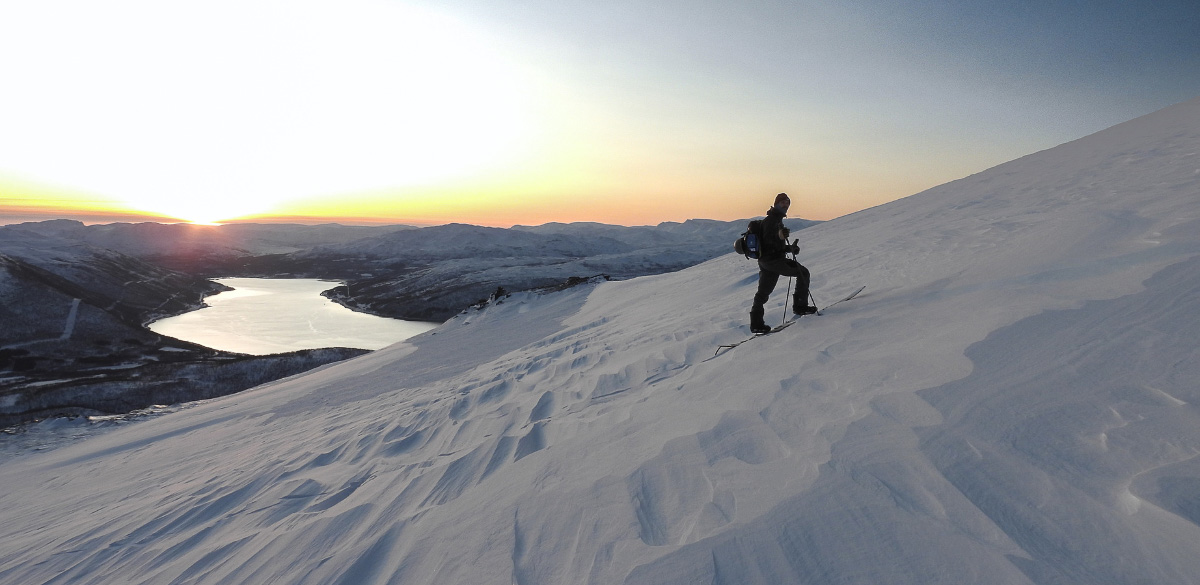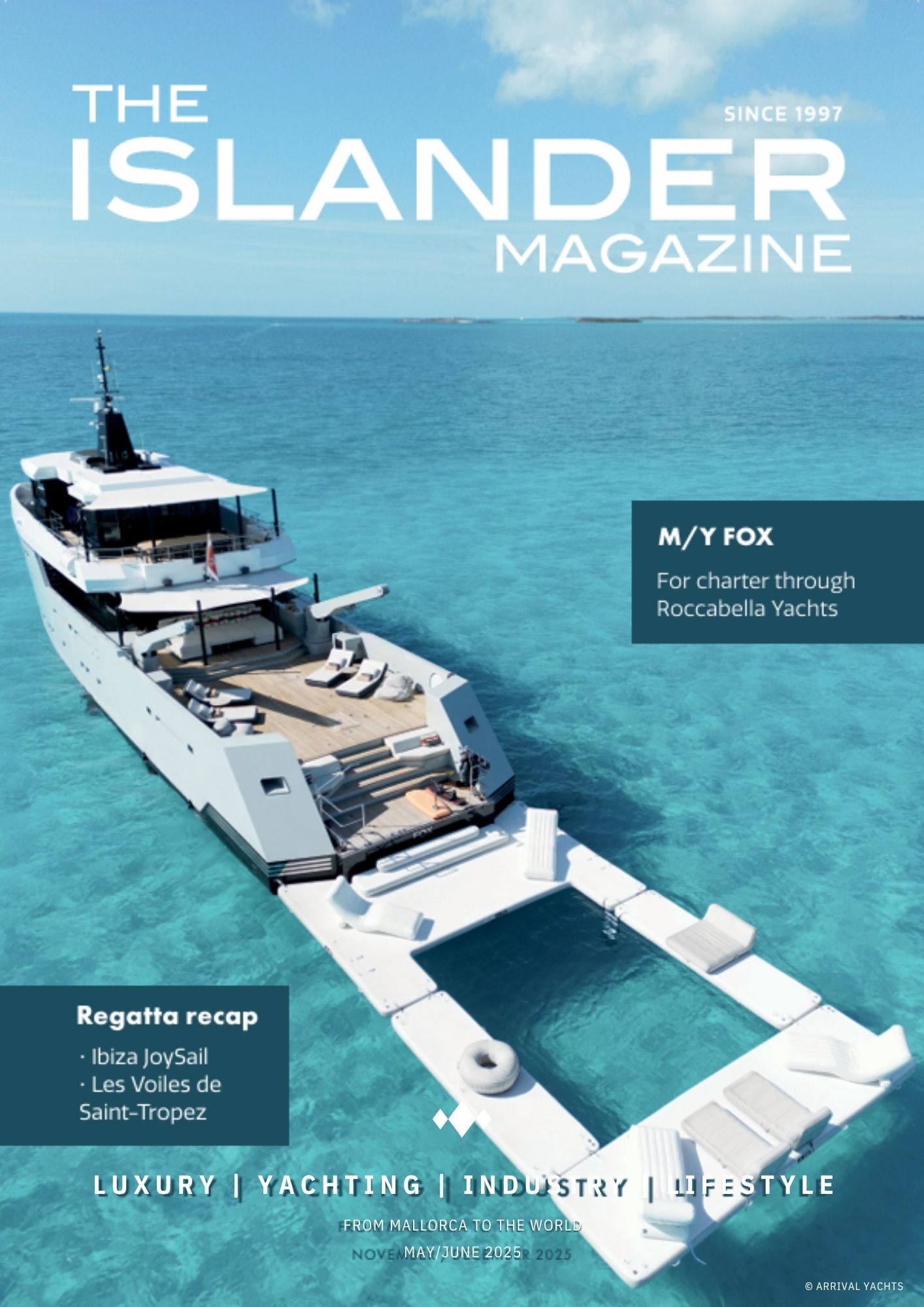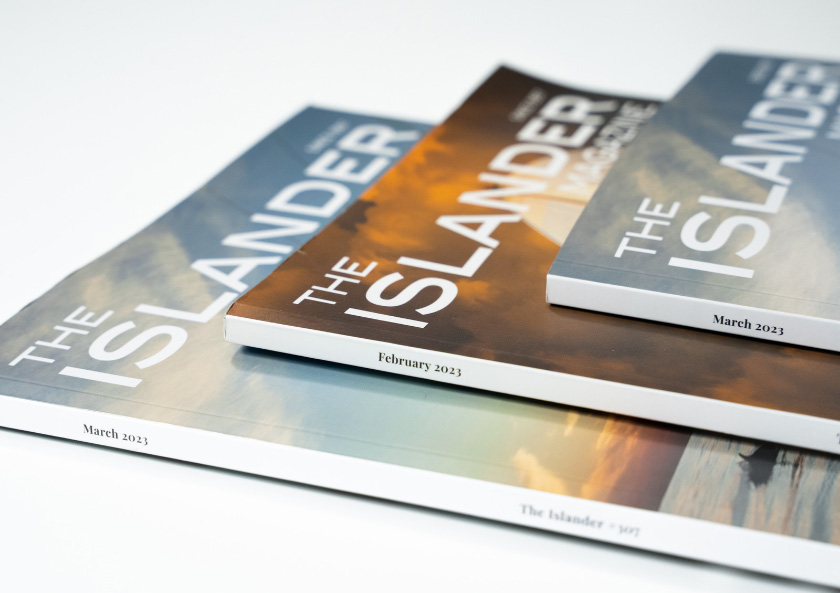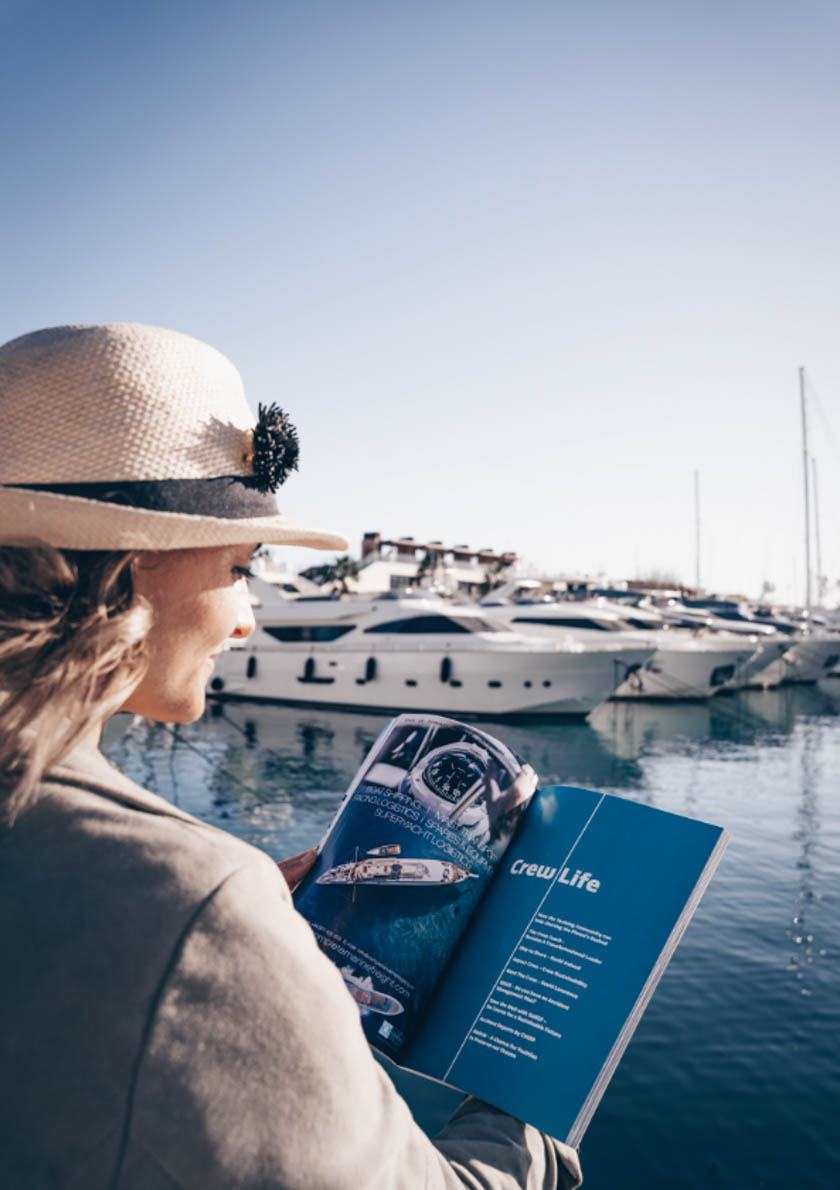The far north, where ice, snow and freezing fjords dominate the landscape. A remote and challenging place to live, so why on earth would you choose to go sailing there? Well, there is something about the mystique of the Arctic. I can’t quite put my finger on it, but it just draws sailors in. Sailing through the dark blue water of the fjord under the misty mountains, the beauty of this untouched nature goes right into your core and you’re hooked. A feeling so pure, it’s hard to explain but let me try to tell you the story about our winter here aboard our 40ft sailboat, Mencia, at 69° North.
How did we prepare for life in the arctic?
My captain and I have been full time liveaboards since 2021. We have sailed north and south, crossed an ocean and even after 20.000 miles still manage to appreciate each other’s company. Mencia, a Standfast P40, has been our home for 2 years now. Our preparations for this cold adventure started during the summer of 2024. We sailed through the Norwegian provinces Troms and Finnmark during the summer, just getting to know the area. We tried out different anchorages in different conditions, looking for sheltered places to hide during the winter storms. Winds up to 80 knots are not an exception in these regions, and they usually bring a lot of snow. I mean buckets of horizontal snow. Knowing where the sheltered anchorages and harbours are, is of vital importance.
The boat also needed some prepping. We knew from previous cold water sailing trips that condensation is something to take into account. Not only is it annoying, it’s just not good for the boat. When we first got Mencia, we had already insulated the hull to get through the wet Belgian winters. This autumn, we put double glazing in the windows of the salon and stitched custom fit insulated covers for all the hatches to minimize condensation buildup on these cold-bridges. These modifications in combination with our Dickinson heater kept us warm and dry all winter.
A wooden hammer, a plastic shovel and a pocket size hair dryer.
These three items we found indispensable during our winter in the arctic. As first time snowbirds we didn’t realize that once the temperature drops below zero in the arctic, it tends to stay there. Therefore, once something is frozen, it will stay frozen for a very long time. That complicated our plans to keep sailing through the winter months a little. The first few times it’s still all fun and games to unfreeze the mooring lines, the sheets and well, basically the entire boat, hence the pocket-sized hair dryer. But hammering icicles from your cleats and shovelling snow off the deck for over an hour before being able to untie the ropes doesn’t seem worth the trouble with only 4 hours of daylight at your disposal. Besides, the sheets are frozen rock-solid so they don’t really wrap around the winches as they should. This meant that sailing trips were limited to the handful of days when the temperature rose to 0°C. Yes, the arctic winter tests a sailor’s patience, but you learn to appreciate this form of hibernation, and the days you do get to go sailing make up for it. Because the feeling you get when you sail between those silent snow white giants is sensational.
Polar night sailing.
At 69°North the polar night starts on November 27th and lasts until January 15th. During this period the sun doesn’t rise above the horizon and therefore is referred to as night. Contrary to common belief, it doesn’t go completely dark. There’s just no direct sunlight. So stormy days are extra dark, but when the weather is calm, it’s more like a twilight zone. The sky is continuously changing colour from orange, to pink and blue as in a never-ending sunset.
But yes, daylight hours are scarce, which means you have to plan your sailing carefully. The mornings are the best, so we started to shovel snow really early or even the day before to make sure we were out and sailing through the fjord at the break of dawn. Since there is no sun, the moon takes the front stage. Even during the day, the moonlight of a full moon will dominate the sky and give the white mountains a magical glow.
And when the skies are clear at night, that’s when the real magic happens. The dark arctic sky becomes the canvas for the Aurora Borealis. One of the most spectacular natural phenomena I have ever seen. Really, I wasn’t convinced at first either. I thought the Northern Lights were milky colored clouds that turn green or pink when seen through a camera. But when you’re out on anchor, away from all light pollution it looks like the sky is on fire. Green and pink flames dance rapidly across the dark blue sky. You have no choice but to look up and enjoy the show.
When the light returns.
During the darkest days of winter, around December 21st your whole body reacts to the absence of light. Your energy level seems to match the numbers of daylight hours, but if you – like us – can acknowledge, accept and appreciate these feelings instead of fighting them, it’s actually quite nice. We used this time to work on little boat projects we had been putting off for a long time. We stayed indoors a little more, reading and making plans for spring and summer. It became a kind of hibernation, and the crazy thing is that as soon as the light returns, your energy levels skyrocket.
From January 15 the days grow longer quite rapidly. The winter storms are still passing by every week or so, but every polar low is followed by a few days of ice cold calmness. The perfect time to explore the fjords. Sail a little bit, drop anchor, throw the splitboards in the dinghy and go for a little land adventure. It usually takes 2 to 3 hours to hike up to the top where the view is spectacular. Looking down at the ocean from a snowy peak, you truly feel like you’re on top of the world. That feeling and being able to combine these two sports is exactly what brought us here. Surviving the depths of winter, watching the mountains change while making plans to sail and ski these remarkable places is really a dream come true.
What’s next?
After the sail and ski season when the snow starts to melt, we’re going further north for a five week expedition in the true Arctic. This summer we are going to explore the remote coasts of Svalbard with a crew of 5. And once we have sailed as far north as we can go, well there is only one thing left to do … we go south. Following the sun and enjoying the endless summer of the Canary Islands.
Interested in joining us for an adventure? Go to www.menciaadventuresailing.com or @mencia_sailing





























0 Comments